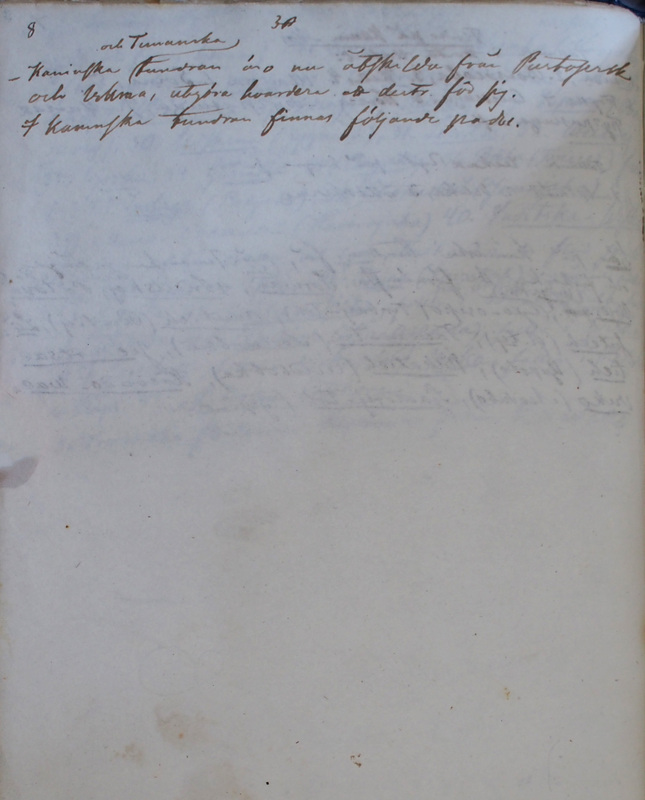Ethnographiska, historiska och statistiska anmärkningar. 008
Title
Ethnographiska, historiska och statistiska anmärkningar. 008
Description
|
Kaninska
och Timanska tundran äro nu åtskilda från
The following tables list the Nenets families and the number of Nenets taxpayers. The categories are somewhat disordered in Castrén’s notes. In the early 19th century, the Nenets living in the Arkhangelʹsk oblastʹ were administratively divided into five groups based on their living areas and on the slobodka ʻvillage, town’ where they customarily paid their taxes. 1. The Kanin Nenets lived on the Kanin Peninsula and the regions south-west and north-west of it. They paid their tribute in Mezenʹ. 2. The Timan Nenets lived in the northern tundra areas east of Kanin. They paid their tribute in Mezenʹ. 3. The Pustozersk or Jugor (jugorskaja samojadʹ) Nenets consisted of communities living in the plains of the Malaja tundra west of the River Pečora and northern tundra areas (Bolʹšezemelʹskaja tundra) east of Pečora. They paid their tribute in Pustozersk. 4. The Ustʹ-Cilʹma Nenets lived in the southern Pečora basin and its vicinity. They paid their tribute in Ustʹ-Cilʹma. 5. The Ižma Nenets lived mostly in the forest or tundra forest areas. They paid their tribute in Ižma. The Ustʹ-Cilʹma and Ižma Nenets were also designated as forest dwellers (lesnye), in contrast to their northern pastoralist tribesmen (tundrovye). The European Nenets are known to have paid their taxes regularly, but not always in the same slobodka, which is why the statistics based on their tax payments are not reliable in every sense. One should also note that the living areas were not as stable as among peasants: there was constant movement between the communities and also over the Ural Mountains. (Kolyčeva 1956; Dolgich 1970: 17; Vasilʹev 1979: 75–85)
Pustozersk
Pustozersk (TN Санэр” харад) was one of the most significant administrative centres of the Mezenʹ uezd during Castrén’s expedition. Founded in 1499 as a fort, it later developed into an important administrative, economic, spiritual, and cultural centre as well as a bridgehead for the northern expeditions in Siberia. Its significance had already begun to decrease in the late 18th century. Currently, there are no inhabitants in Pustozersk. Nevertheless, there is a museum (Pustozerskij kompleksnyj istoriko-prorodnyj muzej). N67°32′11″ E52°35′11″ (NAO-ES: 226.)
och Ishma, utgöra hvardera ett distr[ikt]. för sig. I Kaninska tundran finnas följande роды. |
The Kanin and Timan tundras are now separated from Pustozersk and Ishma; they both form a district. The following family groups exist in the Kanin tundra. |

